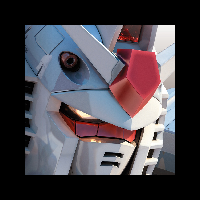Messages: 25
Language: English
darkweasel (User's profile) August 13, 2011, 8:51:12 PM
Vespero_:Ah yes, you're right. Your first version just sounded like "small slightly pale rubbish" (pal-et-rub-et-o).darkweasel:Paletrurbeto, actually. I left out one of the Rs.Vespero_:Palette Town is PaletrubetoI hope "Pallet Town" is Paleturbeto.
Paletro is Palette, Urbeto is town.

Vespero_ (User's profile) August 13, 2011, 9:21:08 PM
darkweasel:xDVespero_:Ah yes, you're right. Your first version just sounded like "small slightly pale rubbish" (pal-et-rub-et-o).darkweasel:Paletrurbeto, actually. I left out one of the Rs.Vespero_:Palette Town is PaletrubetoI hope "Pallet Town" is Paleturbeto.
Paletro is Palette, Urbeto is town.
Not exactly what you want your home town to be called.
Donniedillon (User's profile) August 13, 2011, 11:42:23 PM
LINK
ceigered (User's profile) August 14, 2011, 3:11:08 AM
So I wouldn't stress too much if you can nail a translation of colour

Miland (User's profile) August 14, 2011, 1:00:57 PM
ceigered:..what we would call blue/green were thought to be shades of a single colour.There's a good wiki article on this subject. You reminded me that John Wells gave an interesting talk (in Esperanto*) about the colours of light at the last British congress in Eastbourne, where he spoke about the treatment of blue and green as one colour in different languages. He said that in Russian there are two words for blue, голубой, 'goluboy' and синий, 'sini', meaning respectively light and dark blue, and told of a very interesting experiment which indicated that Russians are a little faster at distinguishing shades of blue!
I don't know about 'language creating thought', but it may influence perception.
*Indicator of relevance in the English-language forum
Solulo (User's profile) August 14, 2011, 10:06:09 PM
Miland: He said that in Russian there are two words for blue, голубой, 'goluboy' and синий, 'sini', meaning respectively light and dark blue,It's a truism and common knowlege. There also two words for blue in Polish; niebieski and błękitny (navy dark blue).
Years ago I used to to be interested in that problem. I wrote an article on it. (Sorry for showing off).
Anyway, do you have any connotations with colours and languages? For me..
Russian is green.
French - blue
German - brown
Spanish - golden
Swedish - black
Norwegian - white
Italian - yellow,
My native Polish has no colour.
Am I out of my mind?
Vespero_ (User's profile) August 15, 2011, 12:36:26 AM
jean-luc:Do you mean synaesthesia ?That would seem to be the case.
I am synaesthetic, but not like that.
Solulo (User's profile) August 15, 2011, 12:25:11 PM
jean-luc:Do you mean synaesthesia ?Not really. Just, sort of play on connotations, like; organ music - church, starry sky - eternity.
sudanglo (User's profile) August 15, 2011, 1:28:18 PM
Kodegadulo (User's profile) August 17, 2011, 2:43:38 AM
Vespero_:Alright, here's the list I've come up with.Cxu io cxi-tie ene odoras iomete purpure, aux cxu estas nur al mi?
Saffron - Orflava
Fuchsia - Helroza
Celedon - Palverda
Lavender - Lila
Pewter - Brilgriza
Viridian - Marverda
Cerulean - Profundblua
Cinnabar - Karmina
Vermilion - Rufa
What bothers me about these translations is that they aren't really ... translations. The original words weren't just colors! Consider:
Saffron = a golden-yellow-orange spice with a rich sweet hay like aroma, evocative of Indian curries or Spanish paella
Orflava = "gold-yellow" (yawn)
Fuchsia = a brilliant pink-to-magenta-to-purple flower that looks for all the world like the very hummingbirds it attracts
Helroza = "bright-pink" (yawn)
Celadon = beautifully-glazed, pearlescently jade-green ceramic pottery and statuary from the Orient, often intricately filligreed with mandalas
Palverda = "pale green" (yawn)
Lavender = light purple long-petaled flowers with that aroma you inevitably encounter as you shop for fancy bath soaps for your grandmother at Christmas
Lila = "lilac, lavender" (well, okay)
Pewter = a shiny silvery-grey alloy of tin, copper, bismuth, antimony, and lead used for flatware, church candlesticks, and fourth-place athletic medals.
Brilgriza = "shiny grey" (yawn)
Viridian = chromium oxide dihyrdate, a bold dark sea-green paint that comes in tubes, which Vincent Van Gogh used a lot of while he was tripping on absinthe
Marverda = "sea green" (yawn)
Cerulean = cobalt stannate, a deep true-blue pigment given that name by its first marketers to evoke the image of heaven as the shroud of night encroaches
Profundblua = "deep blue" (yawn)
Cinnabar = mercury sulfide, a deep blood-maroon-cinnamon-brick-red ore which is toxic enough to make you mad as a hatter but which was esteemed by ancient Chinese alchemy as the elixir of life
Karmina = "carmine" (huh?)
(Carmine = a bright crimson food coloring they make out of insect carapaces -- yeah, I kid you not!)
Vermilion = a.k.a. "China Red", the scarlet-orangish-red pigment (usually derived from cinnabar, actually) with that hue that symbolizes good fortune to a billion people
Rufa = "russet" (are we talking about potatoes here? yawn)
On the other hand, I got no problem with
Paletrurbeto = Palette Town
Indigplatajxo = Indigo Plateau
Those, at least, were translations of the words that were there. But if you really want to capture the nuance and poetry of the rest, you can't just translate what the colors look like, you need the Esperanto words for the substances that give those colors their names. If there aren't any Esperanto words, coin them! If you have to, take English names (or Latin, or what have you) and give them Esperanto orthography.





